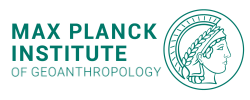East Africa and Madagascar in the Indian Ocean

Boivin, N., Crowther, A., Helm, R. & Fuller, D. 2013. East Africa and Madagascar in the Indian Ocean World. Journal of World Prehistory 26(3): 213-281. PDF
Abstract
The Indian Ocean has long been a forum for contact, trade and the transfer of goods, technologies and ideas between geographically distant groups of people. Another, less studied, outcome of expanding maritime connectivity in the region is the translocation of a range of species of plants and animals, both domestic and wild. A significant number of these translocations can now be seen to involve Africa, either providing or receiving species, suggesting that Africa’s role in the emergence of an increasingly connected Indian Ocean world deserves more systematic consideration. While the earliest international contacts with the East African coast remain poorly understood, in part due to a paucity of archaeobotanical and zooarchaeological studies, some evidence for early African coastal activity is provided by the discovery of early hunter-gatherer sites on offshore islands, and, possibly, by the translocation of wild animals among these islands, and between them and the mainland. From the seventh century, however, clear evidence for participation in the Indian Ocean world emerges, in the form of a range of introduced species, including commensal and domestic animals, and agricultural crops. New genetic studies demonstrate that the flow of species to the coast is complex, with more than one source frequently indicated. The East African coast and Madagascar appear to have been significant centres of genetic admixture, drawing upon Southeast Asian, South Asian and Middle Eastern genetic varieties, and sometimes yielding unique hybrid species. The biological patterns reflect a deeply networked trade and contact situation, and support East Africa’s key role in the events and transformations of the early Indian Ocean world.





